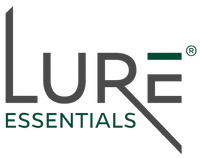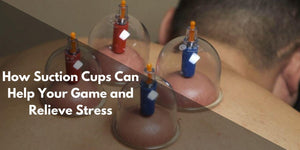Cupping therapy has been practiced for thousands of years in a number of different cultures. Unlike acupressure or regular massage which compresses muscles and tissues, cupping massage decompresses and gently suctions and lifts skin tissue to achieve a variety of therapeutic benefits. Stationary or static cupping has been used throughout history. In this method, the cup is left on a specific area for a certain amount of time. Often many cups are used at the same time in different locations.
TCM (Traditional Chinese Medicine)
The ancient Chinese used cupping therapy as part of the system of Traditional Chinese Medicine which also included acupressure and acupuncture. The air inside of a “cup” was heated and then applied to the skin. As the air inside the “cup” cooled, the air contracted and slightly drew the skin up into the device. It was designed to relieve the stagnation of Qi (flow of energy) and blood in the body.
Animal horns may actually have been the first “cups” used, according to ancient records. During the Qing Dynasty of China doctors used bamboo cups and ceramic pottery. A variety of methods were used to heat the cups. Often a small flame was used inside of the cup. The bamboo cups, however, were usually boiled. Plastic and glass replaced other cupping materials later in Chinese history and are still being used there today.
Cupping history throughout the world
Egypt was the first civilization to use cupping therapy in the western part of the world. A papyrus written before 1000 B.C. records the use of a wet cupping method. Small cuts were made in the skin under the cup, so that blood would be drawn out during the procedure. “In cupping, the ancient Egyptians saw the remedy for just about every disorder,” according to an article at greekmedicine.net.
From Egypt, cupping passed on to the ancient Greeks. Hippocrates and Herodotus were both known to use cupping therapy. Herodotus wrote, “Scarification with cupping possesses the power of evacuating offending matter from the head; of diminishing pain of the same part; of lessening inflammation; of restoring the appetite; of strengthening a weak stomach; of removing vertigo and a tendency to faint…”
Cupping therapy passed down through the centuries in both the East and the West. Eastern cultures using cupping methods included the Alexandrians, Byzantines, and Muslim Arabs and Persians. Cupping continued to be a method of medicine and therapy in the west up into the 20th century.
Modern cupping therapies
Holistic health practitioners, chiropractors, massage therapists, and acupuncturists are currently promoting cupping massage and other cupping therapies, and their popularity continues to grow. Although glass is still used in parts of the world, more effective methods are now available. Lure Home Spa offers silicone massage cups that just need to be squeezed and released on the desired location to create a gentle suction. Three main techniques are often used in cupping therapy:
- Dynamic – the cup is moved, often in a circular or zig zag motion. When this method is used, massage oil is often applied first, allowing the cups to be easily moved while still maintaining suction.
- Static -- each cup remains in the same location, often for about 10-15 minutes.
- Flush Cupping – each cup is squeezed and then released. This action is repeated in the targeted area.
Cupping Benefits
Generally, cupping therapy is designed to improve the circulation of blood, lymph, and other vital fluids while dispersing toxins. It also offers the immediate benefits of other types of massage: relaxation and pain relief. For more information on specific benefits of cupping therapy on the entire body, visit http://lurehomespa.com/.
We would love to hear from you. Is cupping therapy new to you? Let us know in the comments.






